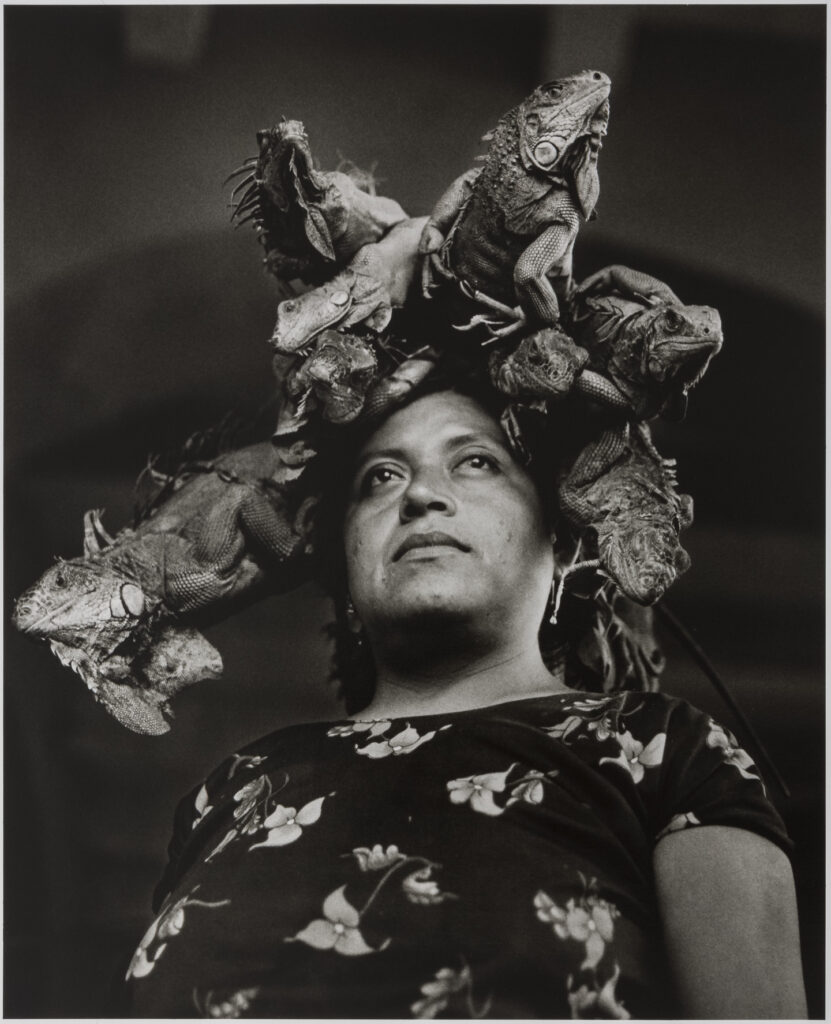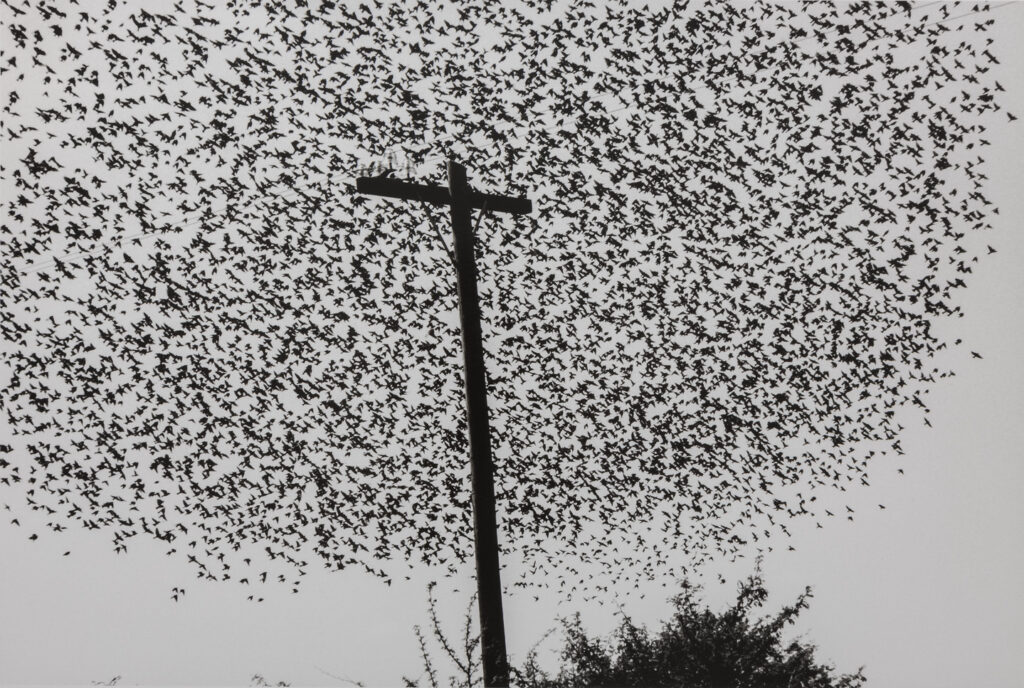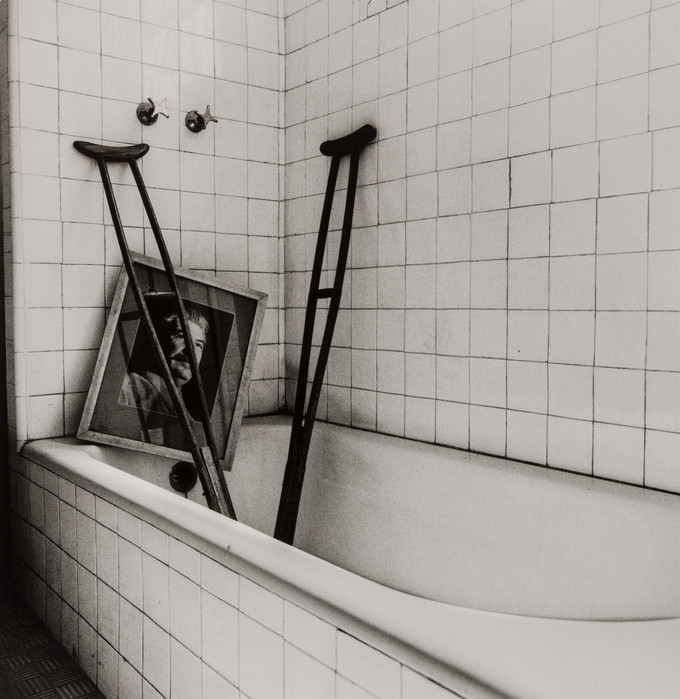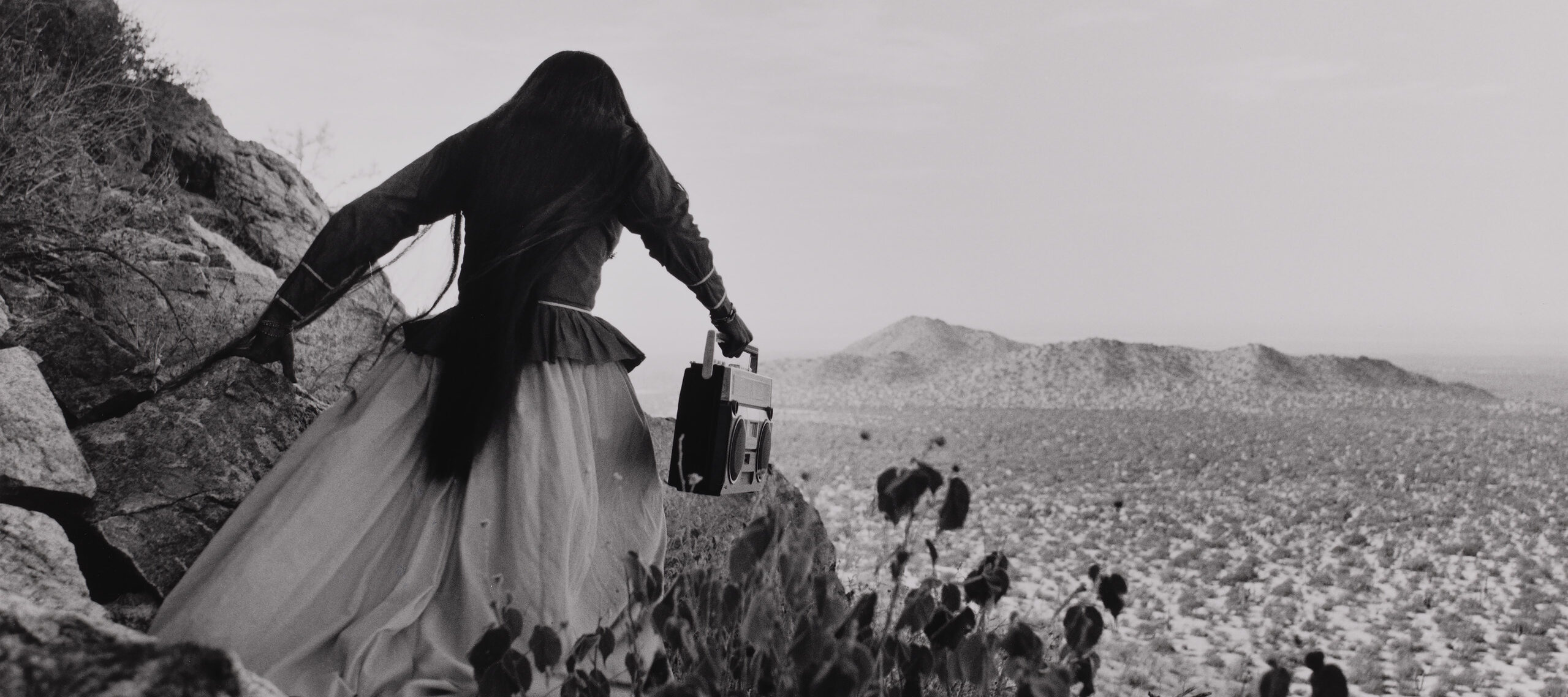WASHINGTON—On February 28, 2020, the National Museum of Women in the Arts (NMWA) presents Graciela Iturbide’s Mexico, an exhibition of 140 personal and poetic photographs bearing witness to the rich and complex culture of the artist’s homeland. For the past 50 years, Graciela Iturbide (b. 1942) has produced majestic, powerful and sometimes visceral photographs. She is considered one of the greatest contemporary photographers in Latin America. This monumental survey of photographs of Mexico, organized by the Museum of Fine Arts, Boston, spans Iturbide’s career with images from 1969 through 2007. It encompasses compelling portrayals of indigenous and urban women, explorations of symbolism in nature and rituals, and haunting photographs of personal items left after the death of Frida Kahlo. Iturbide’s most extensive United States exhibition in more than two decades, Graciela Iturbide’s Mexico will be on view through May 25, 2020.
As a documentary photographer, Iturbide transforms ordinary observation into powerful and provocative art. She integrates herself into the communities she photographs, and this close relationship has led to images of unparalleled sensitivity. Eschewing stereotypical narratives frequently used to represent Mexico, she instead presents nuanced and multifaceted insights through her signature black-and-white gelatin silver prints.
Graciela Iturbide stated, “Photography for me is a ritual. To go out with the camera, to observe, to photograph the most mythological aspects of people, then to go into the darkness, to develop, to select the most symbolic images.”
“For the past half century, Graciela Iturbide has captured the essence of cultures throughout Mexico,” said NMWA Director Susan Fisher Sterling. “She allows us the opportunity to experience her country through her eyes. We are honored to show Iturbide’s captivating photographs at the National Museum of Women in the Arts.”
EXHIBITION THEMES
The exhibition is organized into nine sections that illustrate Mexico as a rich tapestry of cultures, through daily rituals, social inequalities and the coexistence of tradition and modernity. In Early Work, Iturbide’s attraction to unusual urban geometries and her eye for the unexpected is apparent. Three sections focus on her photographs of indigenous societies: Juchitán, home to the matriarchal society of the Zapotec people; the Sonoran Desertin northwestern Mexico, where the Seri, a formerly nomadic group of fisherfolk, live in a transitioning culture; and La Mixteca, chronicling the Oaxacan herding community’s annual goat slaughter festival. On view here is the iconic Nuestra Señora de las Iguanas (Our Lady of the Iguanas) (1979), showing a woman wearing a wreath of iguanas on her head, which has been appropriated by artists, critics, Juchitecans, Chicanos and even Hollywood. In Mujer Ángel (Angel Woman) (1979) a Seri woman in traditional dress walks through the desert holding a boom box, a juxtaposition of old and new technologies. In Carmen (1992), a woman wearing delicate jewelry and a floral-embroidered blouse clenches a knife between her teeth as her hands grip the ankle of a goat against her bloodstained skirt, highlighting the striking paradoxes of the slaughter ritual.

The Fiestas, Death and Birds sections further demonstrate the artist’s deep awareness of cultural symbols. Beginning in the 1970s, Iturbide traveled throughout Mexico recording a variety of lavish fiestas, which incorporate elaborate costumes, ceremonies and spectacles. Alluding to the Roman god who is frequently depicted with two faces, Jano (Janus)(1980) illustrates the significance of disguise in the Mexican fiesta. Intrinsic to some of these fiestas is the subject of death, as seen in Day of the Dead rituals and shrines. In the section Death, Novia Muerte (Death Bride) (1990) depicts a man in a white bridal gown wearing a death mask and holding a bouquet of flowers. His extended arm poignantly alludes to the absence, or death, of a partner.

Early in her career, following the tragic loss of her six-year-old daughter, Iturbide described the need to photograph the deaths of others as a way to come to terms with her own pain. Birds, too, became a vehicle for her spiritual and emotional journey. Pájaros en el poste, Carretera (Birds on the Post, Highway) (1990) depicts a sublime sky filled with birds against the silhouette of a telephone post in the form of a cross. She reflects on her fascination with the animal: “For me, [birds] are a symbol of solitude, freedom and independence.”
In the Botanical Garden section, Iturbide’s photographs of Mexican flora and fauna are rendered with as much as sensitivity as her images of people. In 1998, Iturbide photographed the Ethnobotanical Garden of Oaxaca, which tells the story of the relationship between the people of Oaxaca and the region’s native plants—the cactus, in particular. In Mexico, cacti are used on a daily basis for food, alcohol and medicine, as well as being a national symbol. Jardín botánico (Botanical Garden)(1998–99) shows the caretaking practices of the garden, with the thorny plants supported by newspaper padding and wooden splints. Jardín botánico (Botanical Garden) (2002) shows a cactus receiving an intravenous therapy treatment.
The final section, Frida’s Bathroom, refers to Iturbide’s 2005 commission to photograph Frida Kahlo’s belongings in the painter’s bathroom at Casa Azul (Blue House), where Kahlo was born and died. Iturbide’s stark photographs provide an emotional narrative of the intimate space. Her images focus on objects that underscored Kahlo’s chronic illness and physical pain, including a box of opioid medication, a prosthetic leg and a hospital gown. As with all of her subjects, Iturbide relates to Kahlo personally, as a fellow Mexican woman artist who has used her art to grapple with the hardships and tragedies of life.

Graciela Iturbide’s Mexico is organized by the Museum of Fine Arts, Boston. Presentation of the exhibition at NMWA is made possible by RBC Wealth Management and City National Bank with additional support provided by the Sue J. Henry and Carter G. Phillips Exhibition Fund and Agnes Gund.
The museum extends appreciation to the Embassy of Mexico and the Mexican Cultural Institute in Washington, D.C.
ABOUT GRACIELA ITURBIDE
Iturbide was born in 1942 in Mexico City, the eldest of 13 children from a Catholic family. At age 27, newly divorced with three young children, she enrolled in the Centro de Estudios Cinematográficos at the Universidad Nacional Autónoma de México with aspirations of becoming a film director. During her studies, however, Iturbide found herself drawn to still photography as practiced by the Mexican modernist Manuel Álvarez Bravo. In the early 1970s, she became his assistant, accompanying him on various artistic sojourns throughout Mexico. She also traveled widely across Latin America, including trips to Cuba and Panama. In 1978, she was commissioned by the Ethnographic Archive of the National Indigenous Institute of Mexico to photograph Mexico’s indigenous populations. Iturbide documented the lives of the Seri people along the country’s border with Arizona. In 1979, she was invited by the artist Francisco Toledo to photograph the Juchitán, part of the Zapotec culture native to Oaxaca in southern Mexico. This series resulted in the publication of her book Juchitán de las Mujeres in 1989. Between 1980 and 2000, Iturbide was invited to work in Cuba, Germany, India, Madagascar, Hungary, France and the United States, resulting in a number of important projects.
Iturbide’s work has been exhibited at the Centre Pompidou (1982), San Francisco Museum of Modern Art (1990), J. Paul Getty Museum (2007), MAPFRE Foundation, Madrid (2009), Fotomuseum Winterthur (2009), and Barbican Art Gallery (2012), among others. She is the recipient of the W. Eugene Smith Memorial Fund Award (1987); the Grand Prize Mois de la Photo, Paris (1988); a Guggenheim Fellowship for the project Fiesta y Muerte (1988); the Hugo Erfurth Award, Leverkusen, Germany (1989); the International Grand Prize, Hokkaido, Japan (1990); the Rencontres Internationales de la Photographie Award, Arles, France (1991); the Hasselblad Award (2008); the National Prize of Sciences and Arts in Mexico City (2008); an honorary photography degree from Columbia College Chicago (2008) and an honorary doctorate of arts from the San Francisco Art Institute (2009).
ABOUT THE ORGANIZER
Graciela Iturbide’s Mexico is organized by the Museum of Fine Arts, Boston. The exhibition is drawn primarily from Iturbide’s own collection and also highlights a recent acquisition of her photographs by the MFA with key loans from private collections throughout the United States, Mexico and France. The presentation includes interpretation in English and in Spanish and a documentary video of the artist shot at Iturbide’s studio in Mexico City. Accompanying the exhibition is an illustrated catalogue published by the MFA, which includes critical essays and more than one hundred reproductions of Iturbide’s photographs.
NATIONAL MUSEUM OF WOMEN IN THE ARTS
The National Museum of Women in the Arts (NMWA) is the only major museum in the world solely dedicated to championing women through the arts. With its collections, exhibitions, programs and online content, the museum seeks to inspire dynamic exchanges about art and ideas. NMWA advocates for better representation of women artists and serves as a vital center for thought leadership, community engagement and social change. NMWA addresses the gender imbalance in the presentation of art by bringing to light important women artists of the past while promoting great women artists working today. The collections highlight painting, sculpture, photography and video by artists including Louise Bourgeois, Mary Cassatt, Frida Kahlo, Shirin Neshat, Faith Ringgold, Pipilotti Rist and Élisabeth Louise Vigée-LeBrun.
NMWA is located at 1250 New York Avenue, NW, in Washington, D.C. It is open Mon.–Sat., 10 a.m.–5 p.m., and Sun., noon–5 p.m. Admission is $10 for adults, $8 for visitors 65 and over and students, and free for NMWA members and youth 18 and under. Admission is free the first Sunday of each month. For information, call 202-783-5000, visit nmwa.org, Broad Strokes Blog, Facebook, Twitter, or Instagram.
